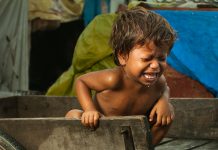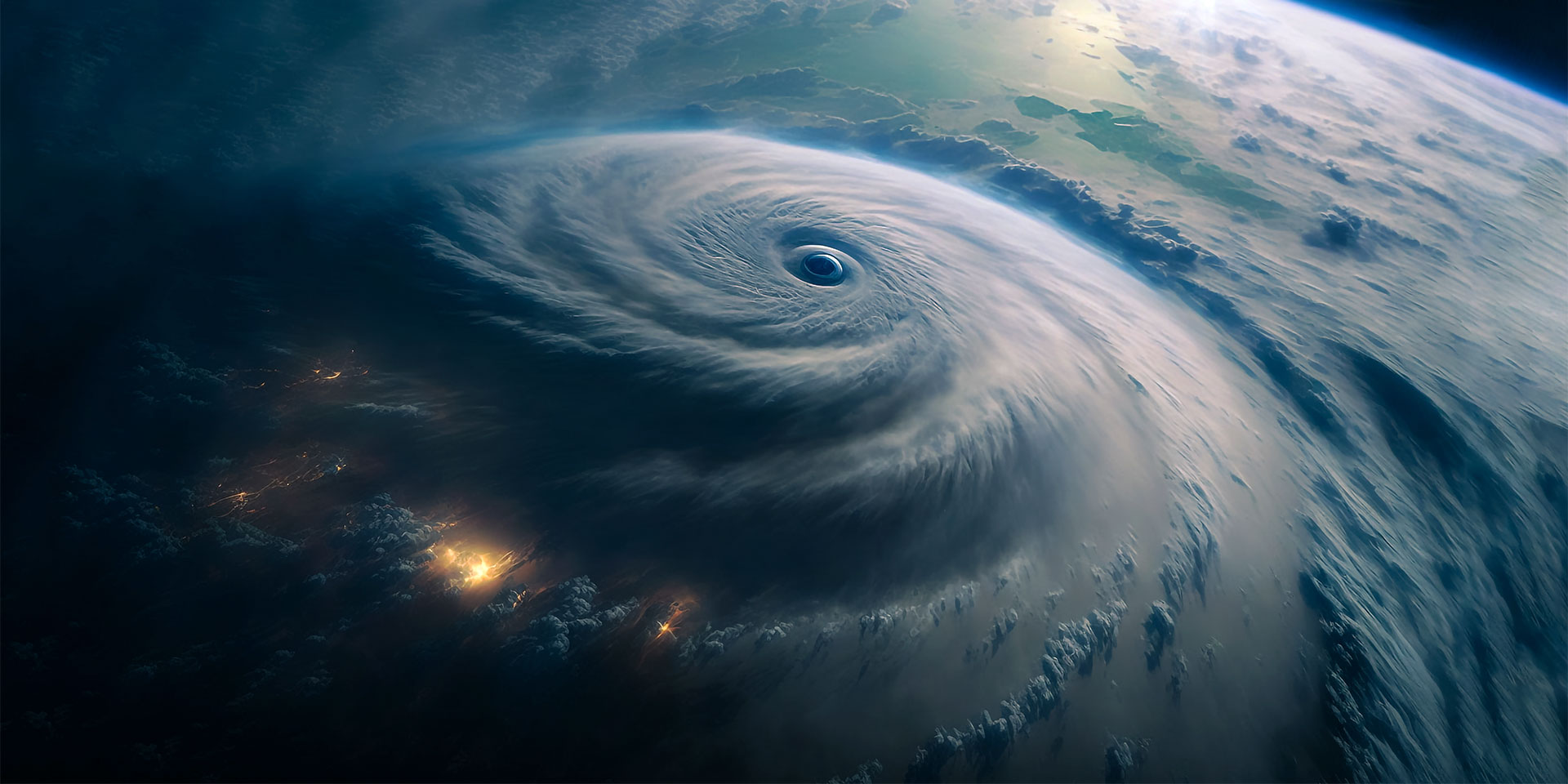Roads turned into raging rivers. Downed power lines. Fallen trees. Homes left in ruins. Those who have experienced the fury of a hurricane will be familiar with these scenes, yet they will still feel uneasy when they see them. This is not only because they are signs of a devastating storm, but also because they seem to show a world that is changing right before our eyes.
“No services, no airports, no charters out to another island.” Yolanda Williams, originally from Greenville, is just one of the many tourists whose holiday was wrecked by Hurricane Melissa, turning their dream tropical getaway into an anxious wait for the day they could go home. Williams landed on Friday in Runaway Bay, a town on the north coast of the island famous for its beaches—the perfect place to celebrate her birthday. It was indeed a memorable anniversary, but not in the way she had imagined when packing her bags.
While on the island, she noticed the uneasiness of fellow tourists who were worried about hurricane news and flight cancellations. The next day, her fears were confirmed: her flight had been cancelled and the airport was closed. She was stuck in Jamaica. At dawn on Tuesday, she was abruptly woken up and evacuated, along with hundreds of other people, to the resort theatre, considered the safest place. Amidst that suffocating crowd, Williams says she tried to remain calm and hopeful. However, she wondered how long she would have to wait before she could return home to her children.
It wasn’t just tourists who were frightened by the prospect of facing a hurricane. Locals in the path of the hurricane that swept through Jamaica on Tuesday said they were all “terrified” by what they had experienced in the last few hours.
Kabien, the owner of a beauty salon in Santa Cruz, recounts how frightened her children were by the wind that tore off doors and parts of the roof. Simon Johnson lives 200 metres from the port in Harbour View, Kingston, with his wife and two sisters. He was “feeling anxious,” although he has been through other hurricanes before, “but not one of this size.”
A cupboard with some snacks became a shelter for Emma Simms and her two children, aged four and one. Despite the storm threatening to tear up everything in its path, Emma transformed the cramped space into a welcoming place, stocking it with water and small gifts for her children. If the house couldn’t withstand the wind and rain, they planned to take shelter there, put a mattress on top and protect the children, reassuring them that even though the storm was raging outside, they were safe in their cupboard.
According to a tourist who brought her entire family to Lucea, a small town on the northwest coast of the island, even the birds left the areas in the path of the hurricane. They had planned to celebrate their 25th wedding anniversary there, but the lively place they arrived at resembled a ghost town even before the hurricane hit.
However, the stories of the survivors are only just beginning to emerge. There is currently no final death toll, but the encouraging news is that despite the hurricane’s violence, the number of deaths remains, for now, lower than in the case of other storms and hurricanes of equal or even lesser intensity.
Nonetheless, the material damage is considerable and will take weeks to assess. Ultimately, it will contribute to the tens of billions of dollars in losses caused by hurricanes in the Caribbean in recent years, burdening countries in the region with huge debts. Hurricane Beryl alone caused $6.5 billion in economic losses in 2024, affecting 45,000 farmers and destroying 8,700 homes.
Jamaica, paralysed by a major hurricane
On Tuesday afternoon, Hurricane Melissa intensified to a Category 5 storm and made landfall near the Jamaican town of New Hope, with wind gusts of up to 295 km/h. This is the highest category on the Saffir–Simpson scale, reserved for hurricanes capable of causing catastrophic damage.
This will certainly be “the storm of the century” for Jamaica, said Anne-Claire Fontan, a tropical cyclone specialist at the World Meteorological Organization. Necephor Mghendi, International Federation of Red Cross and Red Crescent Societies official, said in Geneva that up to 1.5 million Jamaicans could be affected by the hurricane.
The hurricane’s destructive force prompted the US military to withdraw its forces, ships, and aircraft from its path, relocating them to safer areas.
Just hours before the hurricane hit Jamaica, the government announced that it had taken all possible measures to prepare the population. However, Andrew Holness, the country’s prime minister, warned that “there is no infrastructure in the region that can withstand a Category 5″ hurricane and that the major challenge will be to recover quickly after the storm passes.
According to Jamaican officials, approximately 15,000 people were accommodated in government shelters, and over half a million people (one-sixth of the country’s population) were left without electricity. At least one parish, St Elizabeth, the country’s bread basket, was “under water“, according to Desmond McKenzie, the government minister responsible for coordinating Jamaica’s disaster response. McKenzie stressed that a full assessment of the damage was not possible, and that there was no official information on deaths caused by the storm.
Following widespread flooding and landslides that damaged homes, commercial properties, hospitals, and road infrastructure, Prime Minister Holness declared Jamaica a “disaster area.”
A few hours after hitting Jamaica, Hurricane Melissa headed for Cuba. It weakened slightly, reaching category 4 on the Saffir–Simpson scale when it hit eastern Cuba, including the second-largest city, Santiago de Cuba. Cuban authorities evacuated more than 700,000 people, and President Miguel Díaz-Canel urged the population not to underestimate the power of the hurricane, “one of the strongest ever in the region“. A hurricane warning was issued for the provinces of Granma, Santiago de Cuba, Guantánamo, Holguín, and Las Tunas, as well as for the south-east and central Bahamas and Bermuda.
Ocean fever, planet fever
According to the National Hurricane Center in Miami, Hurricane Melissa is among the strongest ever recorded in the Atlantic Ocean, and is the most intense phenomenon of its kind to hit the Caribbean islands since systematic records began 174 years ago.
A remarkable feature of the hurricane is its rapid intensification, which led to wind gusts of almost 300 km/h over a very short period of time. Melissa began as a tropical storm on Saturday, reaching Category 4 on the Saffir–Simpson scale on Sunday morning. Wind speeds increased from 110 km/h to 225 km/h in a 24-hour period—one of the fastest intensifications ever recorded in the Atlantic Ocean. This raises questions about the climatic factors that can amplify such phenomena.
Melissa is the fourth Atlantic storm in 2025 to undergo rapid intensification, highlighting the unusual severity of this year’s hurricane season. The National Oceanic and Atmospheric Administration (NOAA) predicted an above-average Atlantic hurricane season for 2025, estimating that 13–18 named storms would form, of which five to nine could become hurricanes and two to five could reach major hurricane status. With one month to go before the end of the hurricane season, the evolution of the storms largely confirms these predictions.
To determine whether Hurricane Melissa was influenced by climate change, scientists must perform attribution analyses—experiments designed after a weather event to assess the contribution of climatic factors. However, research shows that global warming generally tends to amplify hurricane intensity (in part because hurricanes draw their energy from increasingly warmer ocean waters).
In the last two decades, 8.1% of storms have intensified to become major hurricanes within 24 hours.
According to a study published in 2023, hurricanes in the Atlantic Ocean are about twice as likely to intensify rapidly, turning from minor storms into devastating hurricanes. The researchers analysed 830 tropical cyclones that formed in the Atlantic between 1971 and the present. They concluded that, in the last two decades, 8.1% of storms evolved from Category 1 hurricanes to major hurricanes (Categories 3–5) in just 24 hours. Between 1971 and 1990, this phenomenon occurred in only 3.2% of cases.
“Climate change is fundamentally changing our weather,” said Bernadette Woods Placky, chief meteorologist at Climate Central, an independent research organisation. This does not mean that every tropical cyclone will intensify extremely rapidly. However, as the planet warms, the likelihood of storms undergoing phases of rapid or even very rapid intensification is increasing.
“All of our small island developing states know all too well the fear and dread those in the hurricane’s path are feeling. This trauma should not be anyone’s norm,” said Anne Rasmussen, lead negotiator for the Alliance of Small Island States at the United Nations climate talks. The next round of negotiations is scheduled for next month in Brazil.
Rasmussen’s statements highlight the sad reality that the poorest countries, which pollute the least, often end up paying the highest price for the consequences of climate change. Hurricane Melissa thus becomes a symbol not only of increasingly frequent weather extremes, but also of the global inequalities that the climate crisis is exacerbating.
One hurricane, two worlds: the same scenario?
Although Jamaica is responsible for only 0.02% of total global greenhouse gas emissions, it is among the countries likely to be severely affected by the climate crisis, with increasingly unpredictable weather patterns and rising sea levels in the Caribbean.
As Clare Shakya, director of the climate change group at the London-based International Institute for Environment and Development (IIED), reminded us in 2021, the world owes it to those who suffer most from the effects of climate change to which they have contributed the least.
Despite much discussion in recent years about climate finance for developing countries, aid promises have only been partially fulfilled. Too little money, and at a very slow pace, has reached the countries that cannot cope with climate change. The most critical situation is that of small island states, which face existential threats due to rising sea levels and intensifying storms.
“Our countries don’t have the luxury to become more resilient to climate change. If people are facing the choice between getting shutters for your home versus getting food on the table, the obvious, humane choice is the latter,” said Michai Robertson, senior advisor to the Alliance of Small Island States.
As climate change widens the gap between countries, it is wrong to believe that only the most vulnerable among us will bear the full cost of disasters. It is true that they are now paying a bill they did not contribute to and cannot control. However, as writer Christian Parenti warned, “No amount of walls, guns, barbed wire, armed aerial drones, or permanently deployed mercenaries will be able to save one half of the planet from the other.”














